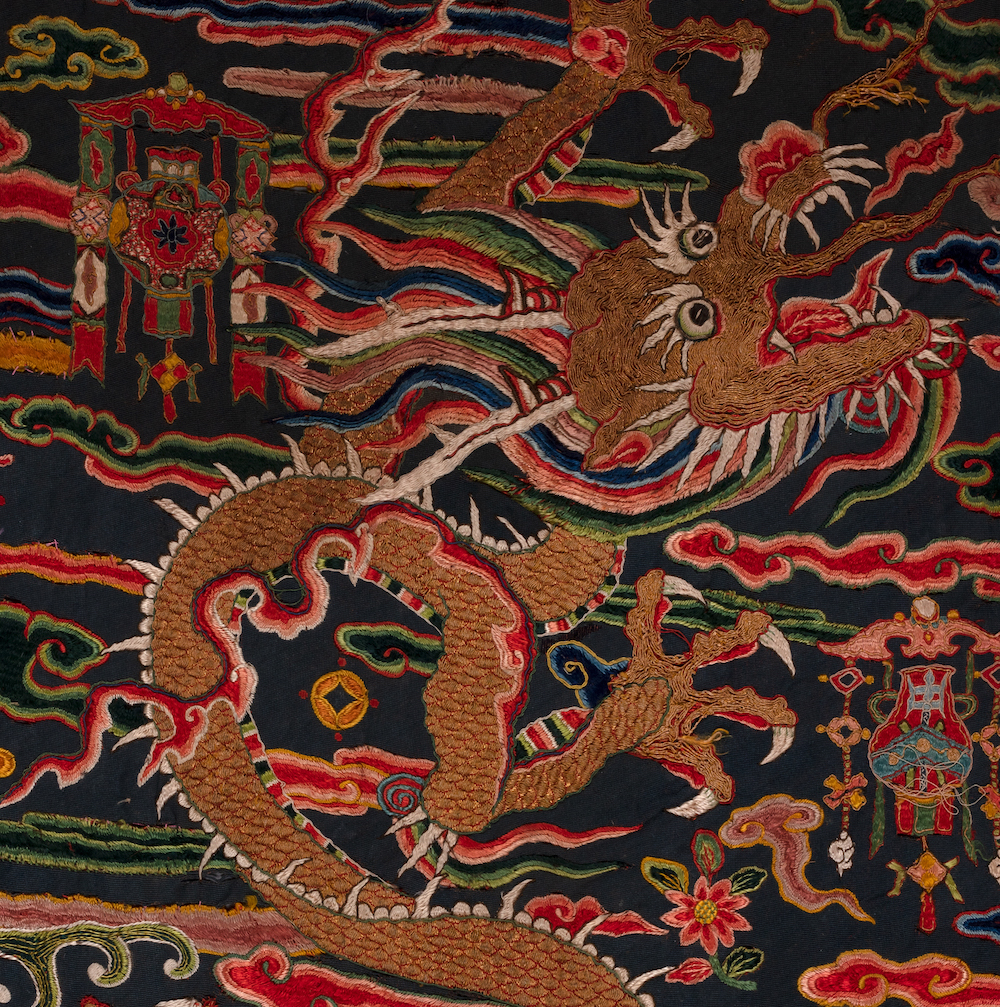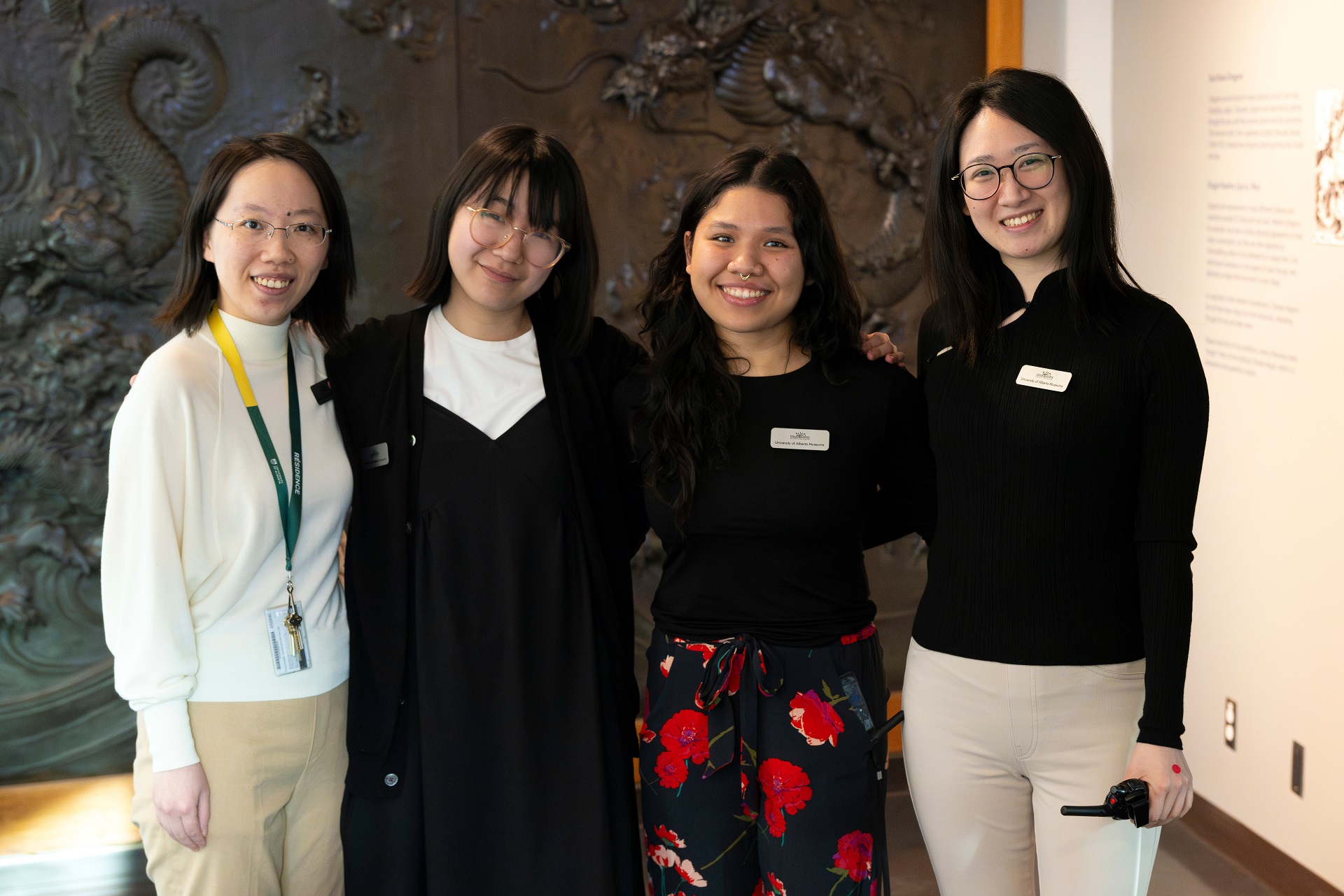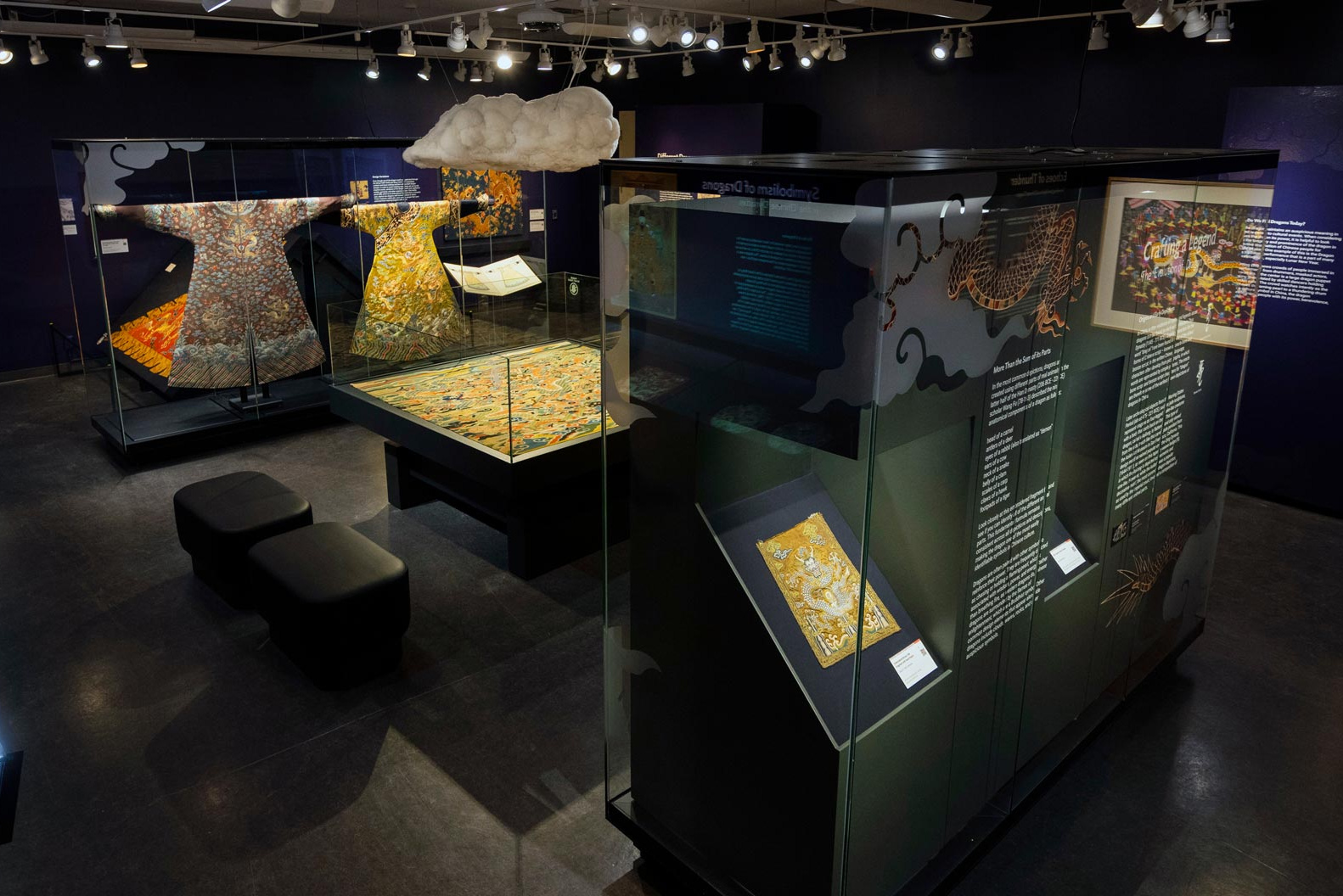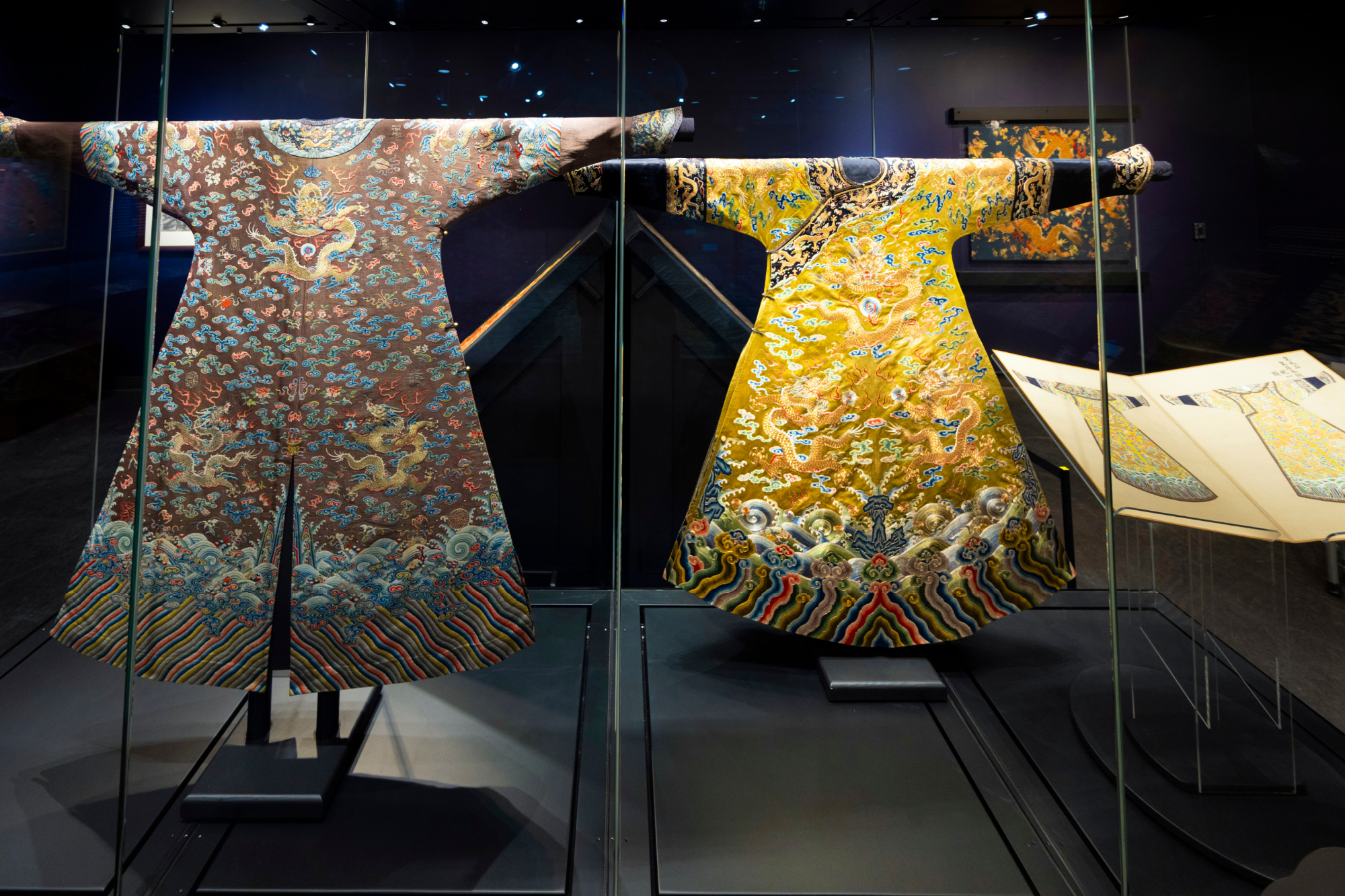Bu Bu Gao Sheng, an aspiration for successful careers
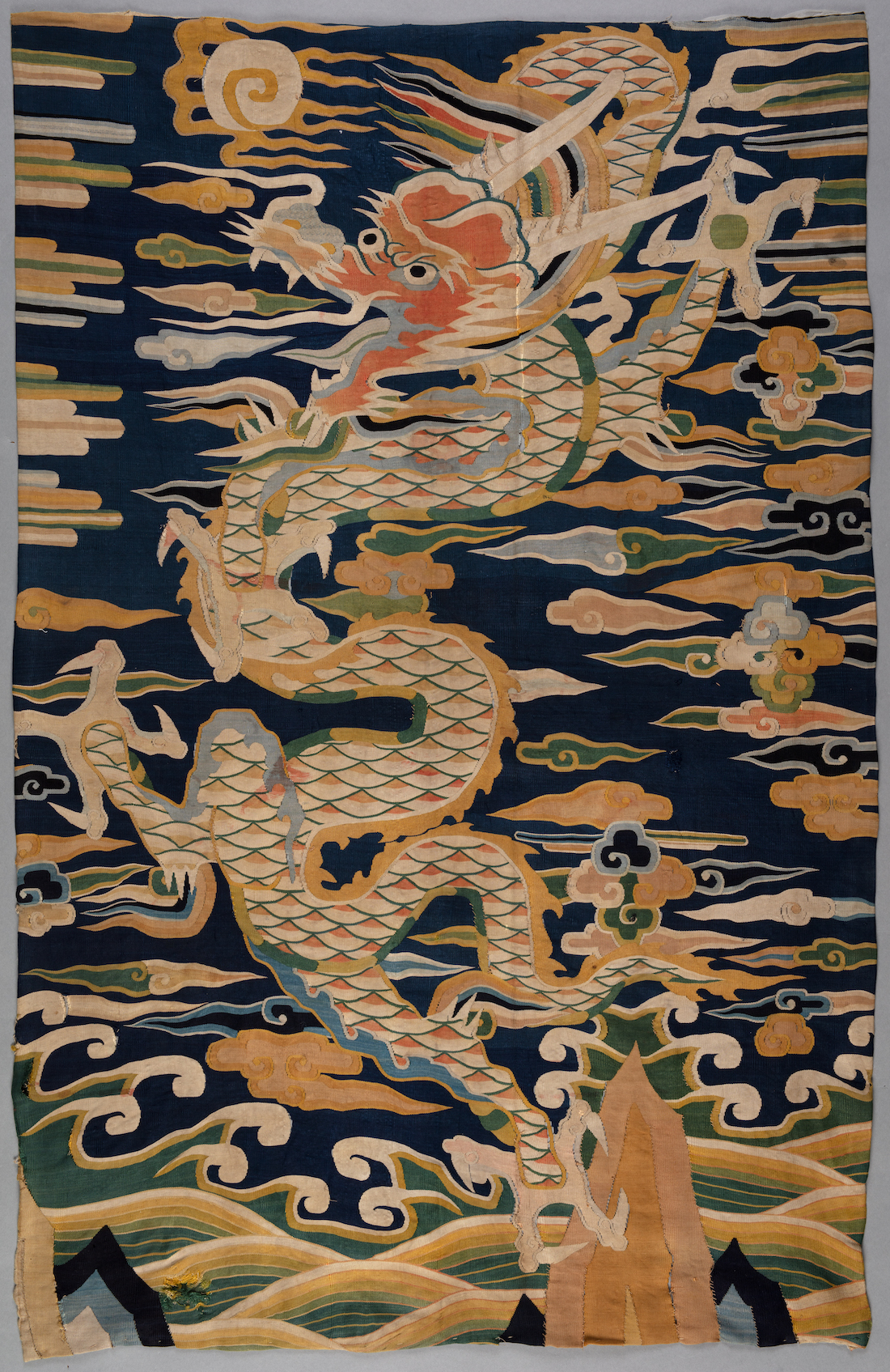
Fragment of Tapestry Weave Yardage, Ming 15-16th centuries; Mactaggart Art Collection, University of Alberta Museums; Gift of Sandy and Cécile Mactaggart; 2005.5.12
During the Chinese Lunar New Year, the most popular expressions are 恭禧發財 (“gong xi fa cai”) and 步步高升 (“bu bu gao sheng”). Translated, these expressions have deep significance, with the former meaning “may you have a prosperous New Year”, and the latter is “to climb step-by-step,” which relays a wish for continued career achievements upon the recipient. They reveal two important desires in Chinese culture - for wealth and success.
Reflecting the expression of climbing step-by-step, this tapestry weave fragment (2005.5.12) from the Mactaggart Art Collection depicts a dynamic dragon climbing the clouds using his strong claws. While moving upward, the dragon turns his head with an open mouth, presumably giving a triumphant roar. As covered in the Echoes of Thunder exhibition, the dragon and its auspicious nature are revered in Chinese culture. The makers of this tapestry weave fragment included the image of a mighty dragon climbing clouds as a visual representation of “bu bu gao sheng”, as the clouds are similar to steps, and the virtuous dragon can be understood as climbing the ladder of success. This fragment also includes other typical design elements found alongside dragons, including a flaming pearl, both swelling and white-capped waves, and geometric rocks. This polychrome tapestry fragment, likely from a larger textile furnishing for a home, reflects popular designs from the late Ming Dynasty (1368-1644).
Another embroidery fragment (2005.5.355) depicts the same theme of a dragon climbing the clouds. The artisan(s) for this piece designed a more complicated composition, with a winding dragon body, curled waves, and several lanterns along the top edge of the design. Upon close observation, we can see the delicate and dense stitches that make up this lavish fragment.
